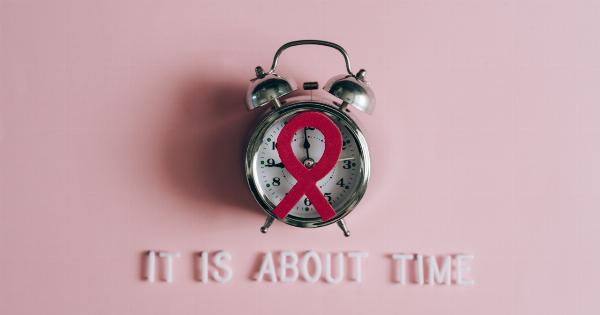HIV/AIDS is a deadly disease that affects millions of people worldwide. With no cure currently available, prevention remains the most effective tool in the fight against this pandemic.
Implementing effective strategies to combat this disease is crucial, and it starts with education and awareness. Here are ten strategies that can help prevent the spread of HIV/AIDS:.
Strategy 1: Use Condoms
The use of condoms during sexual activity is one of the most effective ways to prevent the transmission of HIV/AIDS. Condoms provide a physical barrier that prevents the exchange of body fluids, which can carry the virus.
It is recommended to use condoms consistently and correctly to achieve maximum effectiveness in preventing HIV transmission.
Strategy 2: Get Tested
Knowing your HIV status is essential in preventing the spread of HIV/AIDS. It is recommended that individuals get tested for HIV regularly, especially if they engage in high-risk behaviors such as unprotected sex or injection drug use.
Getting tested allows individuals to better manage their health and prevents the transmission of the virus to others.
Strategy 3: Promote Abstinence
Abstinence, or not engaging in sexual activity, remains one of the most effective ways to prevent the spread of HIV/AIDS. Promoting abstinence as a viable option can help individuals avoid high-risk situations and reduce the transmission of the virus.
Strategy 4: Educate Communities
Community education is crucial in preventing the spread of HIV/AIDS. Educating communities about the disease, how it spreads, and how to prevent it can reduce stigma and discrimination associated with HIV/AIDS.
It also encourages individuals to get tested, use protection, and access treatment and care.
Strategy 5: Increase Access to Testing and Treatment
Increasing access to testing and treatment for HIV/AIDS is crucial in preventing the transmission of the virus. Individuals who are diagnosed with HIV can reduce their chances of transmitting the virus by accessing antiretroviral therapy (ART).
ART can also improve the quality of life for those living with HIV/AIDS.
Strategy 6: Provide Harm Reduction Services
Providing harm reduction services, such as needle exchange programs and opioid substitution therapy, can help prevent the transmission of HIV/AIDS among individuals who use injection drugs.
Harm reduction services can also improve access to HIV testing and treatment for these individuals.
Strategy 7: Promote LGBTQ+ Health Equity
The LGBTQ+ community is one of the groups most affected by HIV/AIDS.
Promoting health equity for LGBTQ+ individuals by addressing social determinants of health, such as discrimination and stigma, can reduce the transmission of the virus and improve overall health outcomes for this population.
Strategy 8: Address Gender Inequality
Gender inequality is a contributing factor to the spread of HIV/AIDS.
Addressing gender inequality, including access to education and economic opportunities, can empower women and girls to reduce their risk of HIV infection and improve their overall health and wellbeing.
Strategy 9: Address Poverty
Poverty is closely linked to the spread of HIV/AIDS. Addressing poverty can reduce the risk of HIV infection by improving access to education, healthcare, and economic opportunities.
It can also help individuals living with HIV/AIDS access essential treatment and care.
Strategy 10: Engage Key Populations
Engaging key populations, such as sex workers, migrants, and people who inject drugs, is crucial in preventing the spread of HIV/AIDS.
Engaging these populations in prevention efforts can reduce stigma and discrimination, increase access to testing and treatment, and improve overall health outcomes.






























